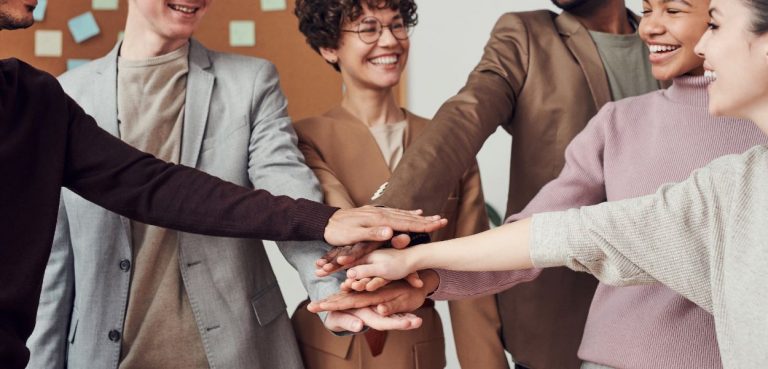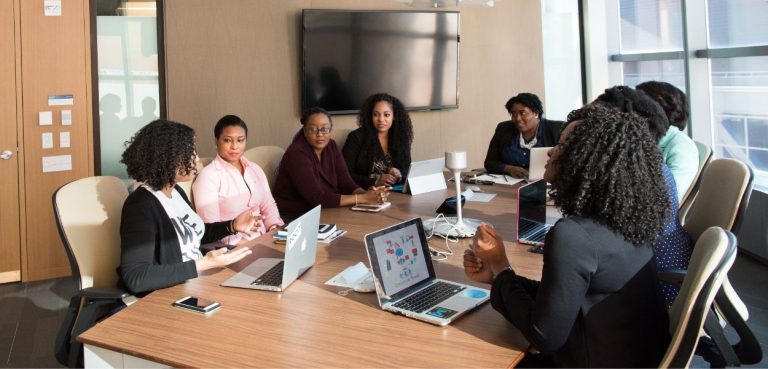Gender parity is the fundamental need to end gender inequalities in all countries worldwide. The term refers to a statistical measure used to describe the proportions between men and women.
According to European Institute for Gender Equality, “when males-to-females ratios are calculated instead, the label ‘sex ratio’ is used instead of gender parity.”

In other words, “It is an instrument at the service of equality, which ensures the access of women and men to the same opportunities, rights, opportunities to choose, material conditions while respecting their specificities.”
Before Gender Parity: Let’s Go Back In History
For centuries, men and women had different roles in society. In Ancient Greece, for example, women weren’t citizens and didn’t have the right to participate in democratic assemblies. Their social role was only linked to marriage and religion.
Aristotle already said that women should be submissive to men and that it is a natural factor of the human race. Also, historians say that his philosophy of women greatly influenced the degradation of them in the West.
Kayla Huber from the Department of History of Lake Forest College shared a quote from Aristotle on the Generation of Animals in an article. He states that “for the first principle of the movement…whereby that which comes into being is male, is better and more divine than the material whereby it is female. The male, however, comes together and mingles with the female for the work of generation” (Aristotle, Book II).
Women’s Empowerment
Women empowerment is expressed through actions to develop gender equity. It “promotes women’s sense of self-worth, their ability to determine their own choices, and their right to influence social change for themselves and others,” says the World Vision website.
Women’s demands for equal rights, voting and political actions and more freedom led to many opportunities we have today. We can find many moments in history that shows it.
For instance, it was 1848 AD when India got its first woman educator in the form of “Savitribai Phule.” “This year marks the rise of women’s empowerment in India as Savitribai Phule busted the social norm that a woman cannot be educated,” says Round Table India.
Originally hurled as a sexist insult, the suffragette were some who fought for their right to vote. The movement was the symbol of the first wave of feminism. According to BBC, “they used petitions, leaflets, letters and rallies to demand the same voting rights as men.”
These and several other historical events justify women’s empowerment’s primary purpose: ending inequalities through women’s social participation.
Transgender Community
Society has evolved, and people are more free to assert and show their identity currently. In a global survey by Statista in 2021, two percent of respondents from 27 countries identified themselves as transgender, non-binary/non-conforming/gender-fluid or other.
It means that we must be aware of gender diversity. Trans women don’t have the same rights and position in society as cis women. In this way, gender parity proposes to analyze the issues around it too.
Gender Parity In Numbers
To measure gender issues, here are a few numbers you must look at to understand the fight for women’s empowerment. Each year, the Global Gender Gap Index benchmarks national gender gaps on economic, political, education and health-based criteria based on 14 indicators in these categories.
Gender parity in Yemen, Iraq, and Pakistan is more challenging. The survey says that “in 2020, Switzerland topped the ranking, while once again Yemen was considered the least gender equal country in the world.”
Western Europe has made the most progress towards gender parity, having closed more than 75 percent of the gender gap. At the same time, it is estimated that gender parity will not be achieved in Western Europe for another 54 years.
According to UN Women, “gender inequality is a major cause and effect of hunger and poverty: it is estimated that 60 percent of chronically hungry people are women and girls. (Source: WFP Gender Policy and Strategy).”
In conclusion, social movements throughout the centuries resulted in effective changes in modernity. Today, women take place in leadership positions and reaffirm their social position. However, this is a fight that doesn’t end here.
Equity for Equality
To achieve equality, it is necessary to use equity. The first term is based on the fact that everyone must have the same rights and duties. Equity, however, recognizes that we are not all the same. In this way, it helps adjust this “imbalance” between people and their background.
A practical example is gender equity, which refers to equal rights for men, women and non-binary people. This culture ensures that the differences between social beings need to be highlighted and respected.
Do you want to read more about diversity, inclusivity and equity? Then you must read this article: Celebrating Uniqueness: the Difference Between Diversity & Inclusivity.






